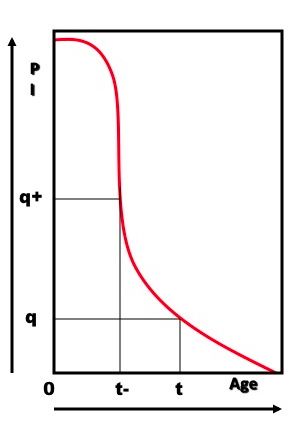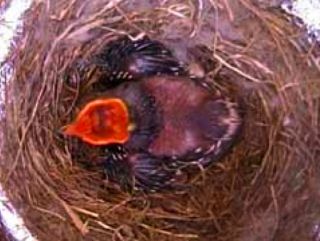Genetics
Parent-offspring Conflict: Time to Listen to the Argument
Family conflicts have a biological basis in evolution and genetics
Posted July 15, 2012

Almost 40 years ago, Robert Trivers pointed out that family conflicts are rooted in biology. Contrary to the prevailing view which sees socialization nurturing the child against the grain of its nature, Trivers stated that “Conflict during socialization need not be viewed solely as conflict between the culture of the parent and the biology of the child; it can also be viewed as conflict between the biology of the parent and the biology of the child.” Furthermore, because of its physical dependency on the parents, he noted that the child has to employ psychological rather than physical tactics.
For the first time, family conflicts were put on an objective, quantitative, scientific basis. Indeed, in one of the most stunning insights in psychology, Trivers proved a theorem which states that, where interactions among themselves are concerned, parents are selected to demand twice as much self-sacrifice—or half as much selfishness (which comes to the same thing)—as their children themselves are selected to want.
And the reason is simple: a child is twice as closely related to itself as it is to its full siblings, but the parents are equally related to all their children. Any act by a child which confers a net benefit on the other children is good news to a parent. But a child’s psychology has been designed to make it want to see at least twice the benefit go to its full sibling before it is prepared to make a sacrifice for it.
The key variable, parental investment (PI), is a quantitative measure of any and all sacrifices made by a parent for a child which promotes the childs' survival and reproductive success at a cost to the remainder of the parent's survival and reproductive success. Of course, the child is the parent's reproductive success, and parents are obliged to invest in offspring if they wish to have any reproductive success at all. But the conflict occurs at the margins, and turns on the questions of What? How much? and When? I never disputed my sons' hunger in relation to the first Big Mac. The arguments began with the demand for a second or third! And even the most wakeful child wants to sleep sometime: the rows are about when.

Age-appropriate PI is another critical issue. PI typically declines with age on a reversed S-shaped curve (left). But this implies that a child who regresses from age t (associated with q amount of PI) to age t- requires q+ PI. And of course, children can regress—especially if the investment being solicited is the care and attention of the mother. When I asked a woman charged with the day-time care of a little boy how old he was, she replied: "He’s 6—or at least, he is until his mother comes home in the evening, when he goes back to being 3!"
Trivers realized that parent-offspring conflicts could be so intense that they could lead to arms-race escalation. Many hatchling birds have brightly colored gapes which they display avidly every time a parent appears with food (below left). But experiment showed that stuffing the baby bird with as many worms as its throat could hold made no difference: even when replete, the bird gapes as if starving! Trivers notes that something similar has happened with human babies and crying. Unlike adults, who sensitively modulate this sign of distress over a wide range of frequencies, children simply tend to cry at full spate for any reason. The result is that adults who would immediately notice even quiet weeping in another adult in the street pass screaming babies without another thought.

As the gape example suggests, Trivers showed that these principles were universal in nature and applied to birds, mammals, and indeed to all species where parents invest in their offspring after birth. And because human beings invest vastly more and for much longer in their offspring than any other species, these insights must apply to us with special force and significance.
So it is all the more notable that, as Schlomer, Del Giudice, and Ellis comment in a landmark paper, Trivers’s theory of parent-offspring conflict theory (POCT) “is barely known in the social sciences and has only rarely been applied to humans … Most strikingly, POCT has been almost completely ignored in the developmental literature on family conflict—the very topic to which it is most directly relevant.”
One reason why POCT has been neglected by psychologists and social scientists may be that many of them are parents—and they certainly are adults rather than children, and often play didactic roles of one sort or another, particularly if they are psychotherapists or professors. Alongside the comment I quoted at the beginning, Trivers points out that parents have a biological insentive to mold their offsprings' behavior to benefit themselves, and then goes on to note that
Since teaching (as opposed to molding) is expected to be recognized by offspring as being in their own self-interest, parents would be expected to over-emphasize their role as teachers in order to minimize resistance in their young. According to this view, then, the prevailing concept of socialization is to some extent a view that one would expect adults to entertain and disseminate.
If 4-year olds published posts on Psychology Today’s website we might hear a very different story than the parents-know-best account of socialization we usually hear! Indeed, you could argue—and elsewhere I have—that the nature/nurture debate is little more than parent-offspring conflict played out at a verbal level and ultimately expresses an irresolvable genetic conflict rooted in sexual reproduction.
Schlomer, Del Giudice, and Ellis note that “POCT extends smoothly from the level of behavior to that of physiology and genetic expression (…); for this reason, it can serve as an effective theoretical bridge between traditionally separate disciplines, such as developmental psychology, psychobiology, and behavior genetics.” Indeed, they add that “conflictual family dynamics at the behavioral and/or genetic level can have far-reaching implications for other areas of research, such as personality and psychopathology.” Citing the imprinted brain theory they remark that, although the
model is still speculative in several respects, and has been met with criticism by some researchers (…), it does hold considerable promise for an integrated evolutionary theory of psychopathology and may be useful to understand normal variation in personality as well (…). A better understanding of the genetic and epigenetic basis of autism and psychosis may also permit the development of improved methods for the early diagnosis and treatment of these conditions.
They conclude that “POCT could potentially revolutionize theory and research on human parent–child conflict.” With so much at stake, isn't it time the parental side started to listen to the argument?
(With thanks to Marco Del Giudice for his help.)




